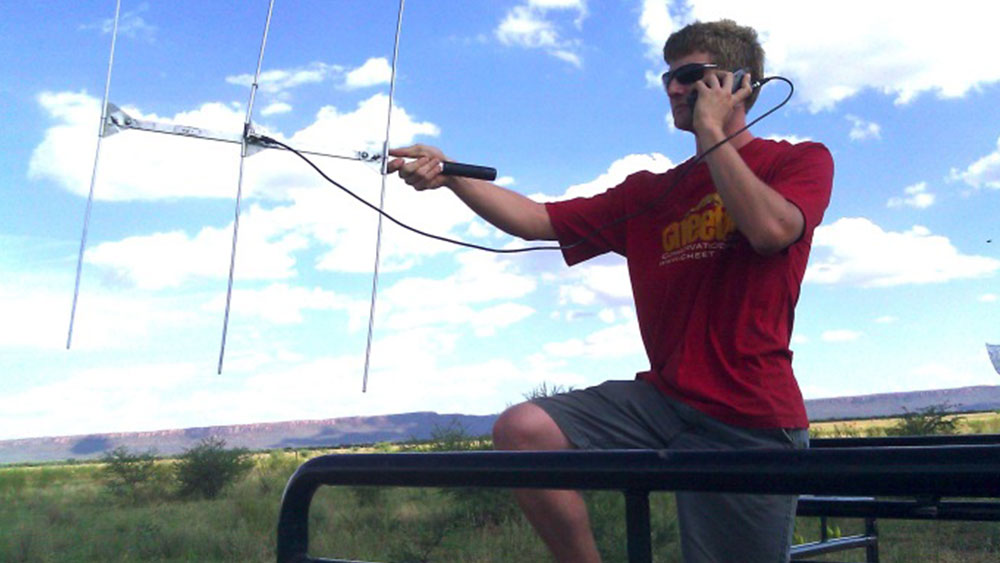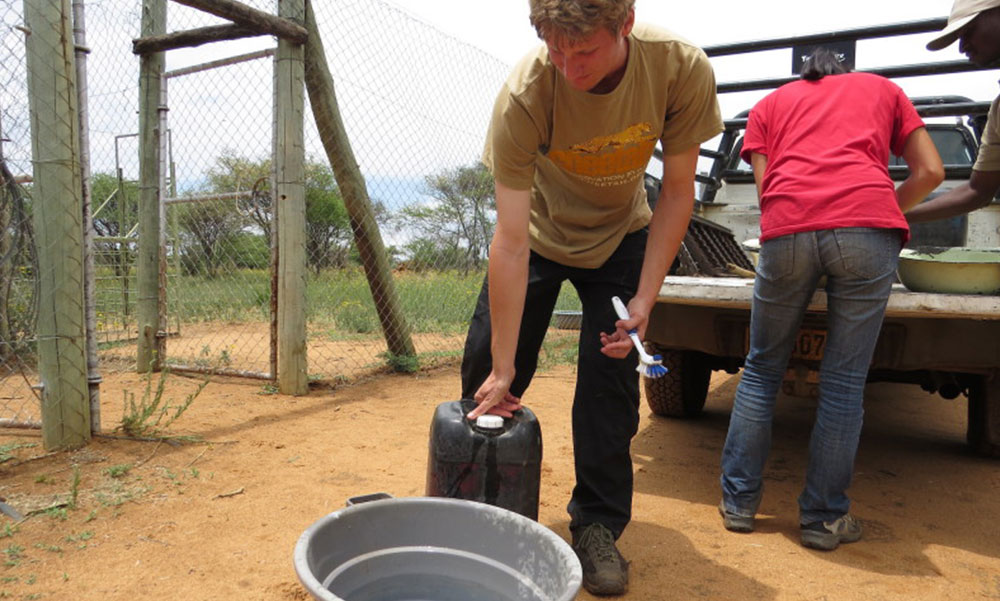Counting All the Game Species in Sight
-

- by Mitchell Deskovick December 8, 2014

It’s been a surprisingly short but busy ten weeks. I arrived in CCF after a sleepy three hour drive from Windhoek and was given the rest of the day to settle into my room and familiarize myself with the arid, prickly landscape. The next morning, I was given a brief orientation and was immediately put to work. CCF was my new home for the next ten weeks, and it took some time to adjust to its eternally busy workplace. For the first two weeks, I was tumbling along trying to keep up with the other interns, who had been working at CCF for some time before my arrival. About two weeks later, I finally got the swing of things, and began to feel at home in a place that was once a foreign and stressful ordeal for me. I knew where all of the livestock guarding dog pens were, I was able to prepare meat for the cheetah center feeding, and I was progressing on my assigned projects.
While I was given regular tasks each week, the actual duties themselves were quite variable. Dog husbandry mainly involved feeding and cleaning up after the livestock guarding dogs. I also helped feed any puppies we had at the time (which could easily get chaotic) and treat wounds for injured dogs. Center feeding (for the cats living closest to the main center) and pen cleaning was another common task. At first, I was raking the feeding pens, washing bowls, preparing meat, and placing food bowls in the feeding pens while a staff member gave a talk to the on-looking tourists. Eventually, I was giving the same talk to visitors and opening gates to let the cheetahs into their feeding pens.
My favorite job was helping with cheetah husbandry. Cheetah husbandry involved feeding the 25 other cheetahs or so on the CCF property. While similar to feeding and cleaning up after the center cheetahs, the other cheetahs were located in areas further away from the main center. During the drives to these “outer” pens, I saw a colorful plethora of native wildlife, including multiple antelope species, birds, giraffes, zebras, warthogs, and many others. We also ran the cheetahs by driving along the outsides of their pens and rewarding them with “meat treats”. Once all of the cats were fed, we would download GPS data so that we could track cheetahs released from CCF. If we found the target cheetah or its kill site, we could determine the cat’s health, what it had been eating, where it might be heading for, and other important information.

While I came to CCF through my school, I was not assigned any specific project to work on, and was instead provided with two CCF projects. The first project involved analysing ten years’ worth of Big Field game count data. The Big Field game counts were monthly game drives where interns and staff drove through a large, open expanse on the CCF property and counted all of the game species in sight. Another intern and I compiled this data and transformed it into graphs so that we could observe any trends in specific animal species over the ten years. My second project involved aging the cheetah kills. I was provided with heads from kills that were found during cheetah tracking and looked at their teeth to determine the age of the animal before it was killed.
By the tenth week of my stay, I was surprised by how fast everything went by. I had met so many people from all over the world and gained a bounty of knowledge and experience, it was easy to lose track of time. While I look forward to heading home on, leaving CCF is a bittersweet feeling. I will miss working with all of the staff and interns alongside the cats. Regardless, I feel that my experience at CCF has enhanced my abilities and will aid me in my future career. My stay at CCF may be over, but it will be an experience I will never forget.
Related Reading
-
December 3, 2023
Paws, Prints and DNA: Chronicles of a Genetics Intern -
June 15, 2023
Internship in the Ecology Department -
June 10, 2023
An Internship with Naughty Goats and Chocolates




